Have you ever wondered if your once-a-year vet visit is enough to keep your cat healthy, or if your feline friend needs more attention for a long, thriving life? Many pet owners are uncertain about the right schedule for cat to the vet visits. In this article, you’ll unlock crucial knowledge about how often cats should see a vet, explore vital care tips, and discover how simple, routine checkups can be the difference between catching early signs of disease and facing major health issues down the line. Let’s take the guesswork out of feline care and set your cat up for a happy, healthy future!
- How often should cats see a vet, from kittenhood to senior years
- What happens during a cat wellness exam
- Why preventive care is essential for all feline friends
- Health risks to watch out for in kittens, adult cats, and senior cats
- Differences in vet needs for indoor and outdoor cats
Unlocking the Mystery: How Often Should Cats See a Vet?
- Have you ever wondered if your feline friend is visiting the vet as often as they should? Discover the essential facts about cat to the vet recommendations, and why regular checkups matter.
Asking how often should cats see a vet? is one of the most important questions you can ask as a cat owner. While cats are famously independent and seem healthy on the outside, they are experts at hiding signs of disease and discomfort. Skipping vet visits can allow early signs of illness or chronic issues to go unnoticed. Most veterinarians recommend wellness exams at least once a year for healthy adult cats, but kittens and senior cats often need more frequent checkups. By learning what your cat truly needs, you’re not just preventing problems—you’re actively giving your feline friend the best chance at a long, happy life.
Regular vet visits do more than just catch obvious health issues. During a routine exam, your veterinarian can detect underlying health concerns, including dental problems, kidney disease, high blood pressure, and early signs of infectious disease. Whether you are managing a playful kitten, a healthy adult cat, or a wise senior cat, building a relationship with your vet ensures your pet gets timely vaccines, preventive care, and personalized advice on nutrition and lifestyle.
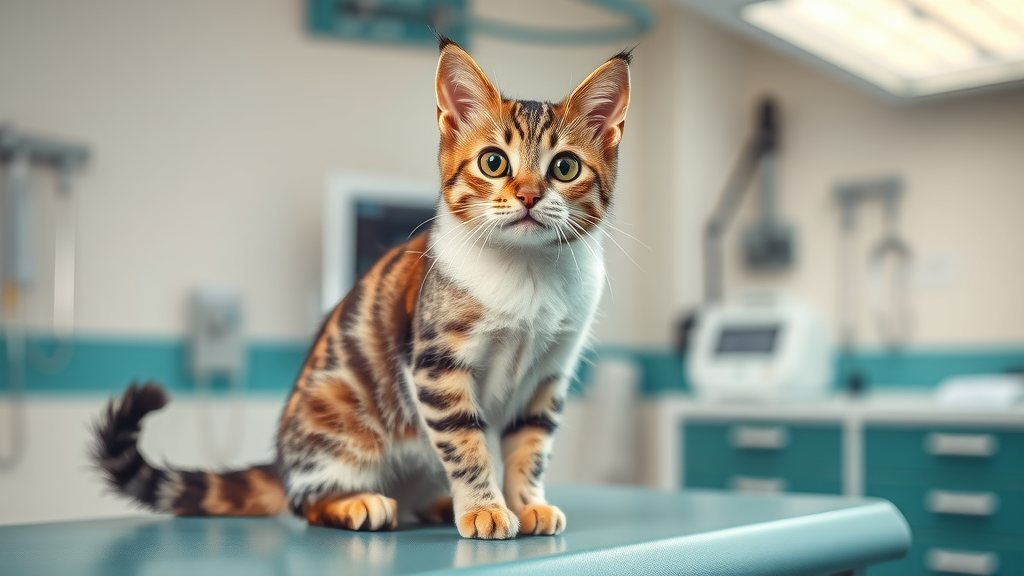
Understanding Preventive Care: Why Routine Visits Matter for Every Cat
The Importance of Preventive Care in Feline Health
Preventive care is the cornerstone of long-term feline wellness. A routine exam goes beyond addressing obvious injuries or illness—it’s a proactive approach that helps detect problems before they become severe. The earlier your veterinarian identifies a health issue, the better the potential outcome for your cat. Preventive care also includes blood tests, vaccines like the FVRCP vaccine and feline leukemia vaccine, and parasite checks, all of which help stop infectious disease before it spreads.
By bringing your cat to the vet regularly, you provide ongoing monitoring of their overall health and catch small changes that could indicate early signs of disease. This is especially vital since cats often hide symptoms until a condition is advanced. Preventive care is crucial for every life stage, including kittens, adult cats, and senior cats. Routine examinations ensure any new health conditions are caught quickly, and any changes in behavior or appetite can be addressed with timely intervention.
If you want your feline friend to enjoy a full life, don’t underestimate the value of keeping up with preventive care. Your vet is your partner in maintaining not just your cat’s physical health, but their happiness and quality of life as well.
What Preventive Care Includes for Your Cat to the Vet Visits
What should you expect during a typical cat to the vet wellness visit? Preventive care includes a physical exam, vaccines, parasite screening, dental checks, and sometimes blood tests—especially if your cat is older or showing early signs of health issues. Your vet will examine your cat’s eyes, ears, teeth, skin, coat, weight, and vital signs. They’ll also ask about changes in appetite, litter box habits, or energy level, all of which can be early indicators of health problems.
During a wellness exam , your vet will recommend vaccines like FVRCP (feline viral rhinotracheitis, calicivirus, panleukopenia), and the feline leukemia vaccine if your cat has outdoor exposure. Parasite prevention—such as deworming or flea control—is also important, especially for outdoor cats. Routine checkups often include dental evaluations to look for gingivitis or tooth decay, which can lead to serious systemic health conditions if left unaddressed.
Finally, preventive care means getting nutritional guidance and weight checks to prevent obesity (a growing health issue in cats). This approach helps you and your vet work together to track your cat’s development, spot chronic illnesses early, and take the necessary steps to ensure your pet thrives.
- Comprehensive physical exam
- Core and lifestyle vaccines (FVRCP, rabies, feline leukemia as needed)
- Parasite screening (fecal tests, deworming, flea/tick prevention)
- Dental evaluation and cleaning
- Blood tests for kidney, liver, and thyroid function in adults and seniors
- Behavioral and nutritional counseling
- Weight check and guidance on body condition
Kitten Care: How Often Should Cats See a Vet During Their First Year?
Kitten Vaccinations, Checkups, and Growth Milestones
Kittens require special attention when it comes to veterinary visits. In their first year, they grow rapidly and are especially vulnerable to infectious disease. During this period, most veterinarians recommend vet visits every 3–4 weeks starting at 6–8 weeks of age, continuing through 16–20 weeks. These frequent checkups are essential for vaccines, parasite screening, and monitoring growth milestones. Your vet will administer a series of core vaccinations—like FVRCP and often the feline leukemia vaccine —to protect your kitten against deadly diseases such as panleukopenia, feline viral rhinotracheitis, feline calicivirus, and feline leukemia.
Each wellness exam in this early stage also checks for developmental concerns, congenital conditions, and addresses behavioral or nutritional needs. This routine sets a strong health foundation for your kitten’s entire life. Your veterinarian will guide you on when to spay or neuter your kitten, as well as when to transition to adult food. If your kitten comes from outside or is part of multiple litters of kittens, the vet will also advise on extra precautions for infectious disease control.
Early vet care is not just about vaccines—your vet will also guide you on early signs of disease to watch for, ensuring your kitten stays vibrant and healthy as they grow.
| Age | Visits | Vaccines | Wellness Checks |
|---|---|---|---|
| 6–8 weeks | First visit | FVRCP (initial), deworming | Physical exam, parasite screen |
| 10–12 weeks | Follow-up visit | FVRCP (booster), Feline Leukemia (if recommended), deworming | Growth & development checkup |
| 14–16 weeks | Final core vaccines | FVRCP (booster), rabies, Feline Leukemia (booster) | Comprehensive physical exam |
| 5–6 months | Optional | Spay/neuter surgery (if not already performed) | Post-op exam, nutritional guidance |
| 12 months | Annual vet visit | Booster shots as recommended | Routine checkup, dental evaluation |
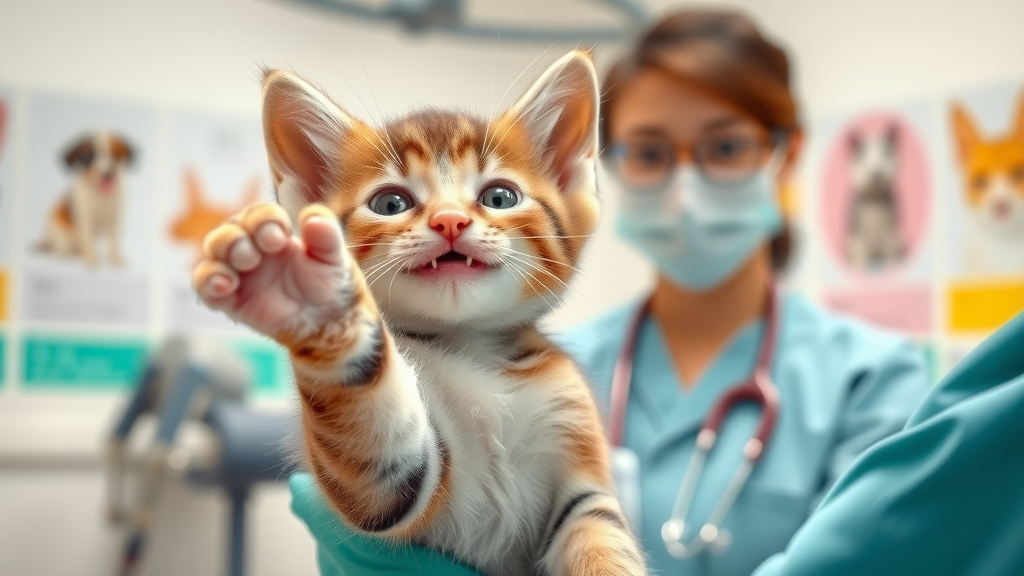
How Often Should an Adult Cat See a Vet? Essential Steps for Adult Cats
Annual Health Exams and Preventive Care for Adult Cats
For a healthy adult cat (typically aged 1–7 years), the gold standard is an annual wellness exam . These once-a-year visits allow your veterinarian to monitor your cat’s changing needs, update core and lifestyle vaccines, review parasite control, and conduct a thorough exam for early signs of health issues. The importance of a yearly physical exam cannot be overstated: even a healthy adult cat can develop subtle problems, such as dental disease, asthma, or obesity, which can quickly spiral without notice.
During the annual appointment, your vet will track your cat’s weight and dental health, check for lumps, heart murmurs, or abnormal findings, and discuss nutrition, behavior, or lifestyle changes. Blood tests might be recommended depending on findings or if your cat has a specific risk factor. Regular preventive care, including vaccines and parasite control, is vital to protect your adult cats from both indoor and outdoor health threats.
Some adult cats with special needs or pre-existing health conditions may require more frequent checkups, such as every six months. Always follow your vet's recommendations to ensure your feline friend enjoys the longest, healthiest adulthood possible.
Common Health Issues in Adult Cats: What to Watch For
Even a healthy adult cat is at risk for certain health issues that benefit from regular monitoring. Dental disease is one of the most common problems in adult cats—plaque and tartar can cause pain or infection, yet build quietly until your cat stops eating. Signs such as bad breath, drooling, or pawing at the mouth warrant a visit to the vet for a dental assessment. Other routine findings during a physical exam can include weight gain or loss, which may signify diabetes, thyroid problems, or kidney disease.
Adult cats can also suffer from urinary tract disease, skin conditions, allergies, or early signs of arthritis. Watch for symptoms like litter box avoidance, frequent urination, vomiting, or decreased activity. Blood tests may be suggested annually to catch issues like liver or kidney disease in their early stages, long before symptoms appear. Always report any changes in your cat’s behavior, eating, or grooming habits to your veterinarian—these are often the first clues to underlying health problems.
Staying on top of routine checkups means you and your vet can act quickly if an issue arises, rather than scrambling to manage advanced health conditions that might have been preventable with earlier intervention.
Senior Cat Health: How Often Should Senior Cats See a Vet?
Twice-Yearly Vet Visits and Enhanced Preventive Care
Once your cat reaches 8–10 years old, they are considered a senior cat —and their vet care needs change significantly. Senior cats should visit the vet at least twice a year for wellness exams. These more frequent visits recognize that aging cats are at higher risk for health issues like kidney disease, diabetes, hyperthyroidism, high blood pressure, and certain cancers. Early detection and intervention in this age group can dramatically improve quality of life and longevity.
Senior cat checkups include a comprehensive physical exam, blood tests to assess organ function, urine analysis, blood pressure monitoring, and dental evaluations. Your veterinarian will also track for subtle changes in weight, appetite, or grooming, which may indicate emerging health conditions. Preventive care for senior cats may include special nutrition, joint supplements, or medications tailored to chronic issues.
If your senior cat is already managing a chronic illness, your vet will create a customized monitoring schedule, often recommending quarterly visits or more, to track progress and promptly address any concerns. Proactive care in this life stage is the surest way to keep your wise feline companion comfortable and happy.
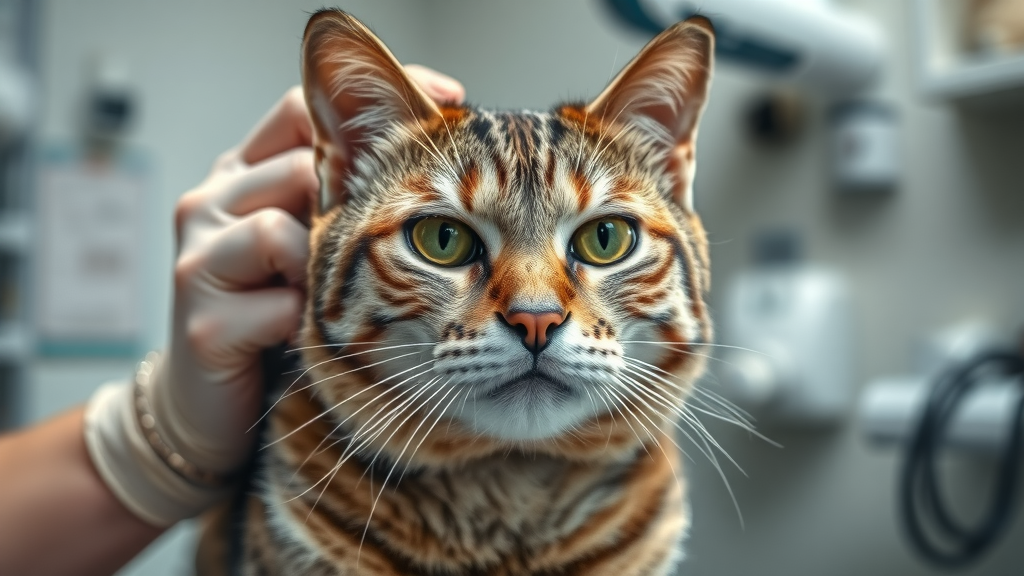
Top Health Issues Affecting Senior Cats
Common health problems in senior cats include chronic kidney disease, hyperthyroidism, diabetes, arthritis, dental disease, and increased risk of certain cancers. Signs of disease can be confusing or subtle in older cats—sudden weight loss, increased thirst and urination, changes in appetite, hiding, or poor coat quality can indicate underlying health issues.
Other problems like hypertension and cognitive decline (feline dementia) often manifest as behavioral changes—disorientation, vocalization, or altered sleeping patterns. Regular blood tests and blood pressure checks during twice-yearly visits make it easier to spot these issues before they progress. Your veterinarian will also monitor for early signs like dental pain, decreased mobility, or shifting body condition.
If you notice any sudden changes, such as difficulty walking, vomiting, seizures, or respiratory distress, do not wait for the next routine exam; these may require immediate attention. Older cats rapidly decline once a health issue becomes significant, so early intervention is vital for the best outcome.
- Refusing to eat or drink for 24+ hours
- Sudden weight loss or lethargy
- Difficulty breathing or persistent coughing
- Unexplained vomiting or diarrhea
- Trouble walking, falling, or dragging limbs
- Straining to urinate or frequent litter box trips without success
Spotting Trouble Early: Health Issues and Emergency Vet Visits
Signs Your Feline Friend Needs a Vet Visit Outside Regular Checkups
Knowing when to schedule an extra visit can save your cat’s life. If you notice early signs such as sudden loss of appetite, hiding, vomiting, coughing, or marked changes in energy, don’t wait for the next routine checkup. Other warning signs include difficulty walking, changes in urination or defecation, foul breath, or bloated abdomen—these can all indicate a serious health issue that demands prompt veterinary attention.
Emergency situations—such as difficulty breathing, seizures, collapse, severe trauma, or uncontrolled bleeding—require immediate vet care. Cats may quickly deteriorate in cases of poisoning, urinary blockage, or infectious disease. Trust your instincts: if you think your cat looks or acts very different from usual, a trip to the vet is always safer than waiting and hoping symptoms resolve.
In between regular preventive care visits, stay vigilant for the subtle signs of disease that cats are prone to disguise. The sooner a concern is addressed, the better the chances for your feline friend’s recovery.
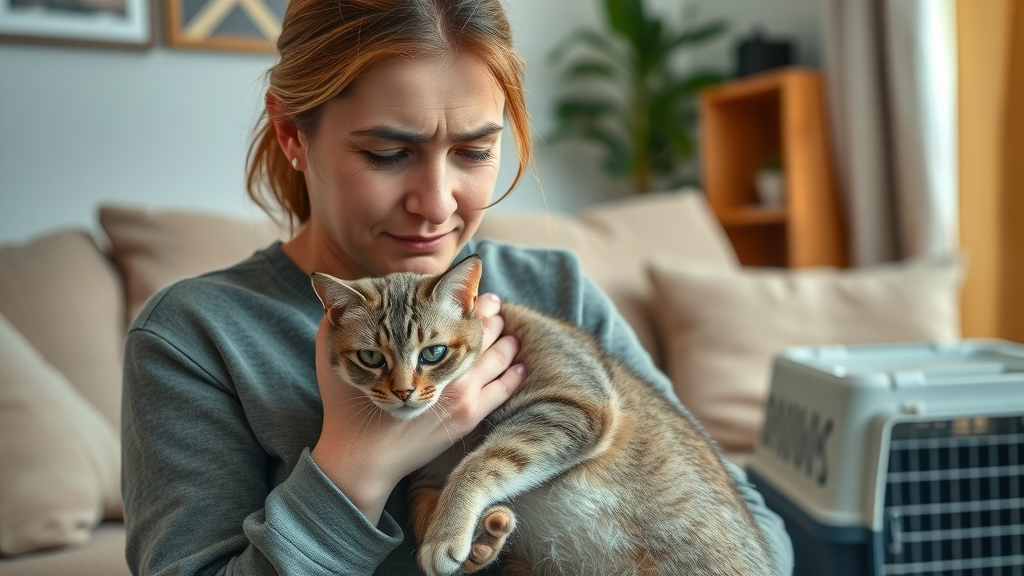
How to Respond to Sudden Health Issues in Cats
If you believe your cat is experiencing a sudden or severe health issue, do not delay—immediate action can save your cat’s life. Contact your veterinarian or an emergency animal hospital to describe the symptoms. If possible, safely transport your cat in a pet carrier, keeping them calm and secure. Do not administer medications or try home remedies unless directed by a vet, as incorrect treatment can worsen some health conditions.
Preparation helps: keep your vet’s contact numbers and the nearest emergency clinic’s address on hand. Note any changes in your cat’s behavior, appetite, or litter box use to report when you arrive. The more information you provide, the faster your vet can diagnose and treat the underlying health issue. Knowing early signs and acting quickly are key parts of modern preventive care and can mean a world of difference for your cat’s prognosis.
Prevention and quick response go hand in hand—prioritize both, and you’ll be the best advocate for your feline friend’s wellbeing.
How Preventive Care and Cat Wellness Exams Save Lives
“Annual exams and preventive care are the bedrock of a long, healthy feline life.” — Dr. Susan Blake, DVM
Early Detection: Preventing Chronic Health Issues in All Cats
The real power of a regular wellness exam is catching chronic diseases in their earliest, most treatable stages. Many life-threatening feline conditions—like diabetes, kidney disease, hyperthyroidism, or even feline leukemia—progress silently and can be managed far more easily if discovered early through routine checkups and simple blood tests. Early detection doesn’t just extend your cat’s life; it ensures their golden years are comfortable and pain-free.
By building a preventive care routine with annual or twice-yearly exams, you minimize suffering and maximize the chance for successful recovery should a problem develop. Your vet monitors trends from year to year, helping spot gradual changes that a pet owner might not notice. Consistent care keeps infectious diseases like feline viral rhinotracheitis and feline leukemia in check, and identifies nutrition or lifestyle adjustments that boost your cat’s health and happiness.
Never underestimate the advantage of advanced warning—it’s the easiest, most effective way to safeguard your cat’s future.
- Early identification and treatment of chronic illnesses
- Higher vaccine efficacy and infectious disease prevention
- Better weight and nutrition management
- Dental health maintenance
- Prolonged longevity and quality of life
- Less expensive treatment via early intervention
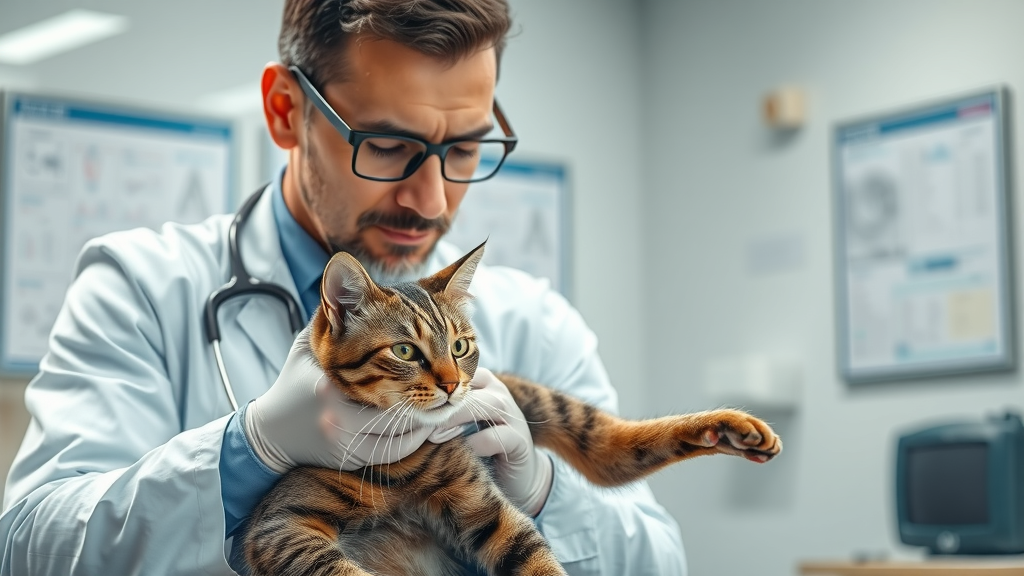
Differences for Indoor vs. Outdoor Cats: How Often Should Each See a Vet?
Do Indoor Cats Need Less Frequent Vet Visits?
Indoor cats do have lower risk for some infectious diseases, but they still need regular preventive care. At a minimum, healthy adult indoor cats should see the vet yearly for a wellness exam . These exams catch issues like dental disease, heart murmurs, early kidney disease, or obesity that can all occur indoors. Indoor cats may also develop unique behavioral or nutritional issues, which can be addressed during your routine exam. Vaccines are still important, as certain viruses or bacteria can be tracked in on shoes or clothing. Annual exams allow your vet to tailor care to your cat’s safe, inside-only lifestyle.
Skipping routine checkups for your indoor cat can invite trouble. Subtle or early signs of health issues can easily go unnoticed without professional oversight. Annual exam intervals provide essential preventive care, giving your feline friend the attention they need no matter where they spend their days.
If risk factors or health conditions develop—such as chronic disease or behavioral changes—your vet may recommend increasing the frequency of visits for your indoor cat.
Risks and Considerations for Outdoor Cats
Outdoor cats face higher risks for injuries, parasites, and infectious diseases. Because of this, outdoor cats should have more frequent vet visits —generally every six months. Outdoor felines are more likely to need vaccines for rabies, feline leukemia, and FVRCP due to their risk of exposure to other cats, wildlife, or environmental hazards.
Parasite control is especially important for outdoor cats. Vets will screen for fleas, ticks, intestinal worms, and even heartworm, which can cause serious health issues. Outdoor cats should also be microchipped for safety. Discussion of risks, such as feline leukemia or trauma from accidents or fights, is part of every visit. Your vet will help you create a plan for protecting your adventurous feline friend while maximizing their lifespan and comfort.
Because injuries can occur, any change in an outdoor cat’s routine, appetite, or mobility warrants a prompt checkup in between preventive visits. Outdoor cats benefit tremendously from proactive, regular veterinary care.
| Care Aspect | Indoor Cats | Outdoor Cats |
|---|---|---|
| Vet Visit Frequency | Annual wellness exam | Every 6 months or more |
| Vaccine Recommendations | Core vaccines (FVRCP, rabies) | Core + Feline leukemia, rabies, FVRCP boosters |
| Parasite Control | Routine check (fleas, worms) | Frequent check, tick/flea prevention, heartworm |
| Potential Risks | Obesity, dental, inactivity | Injury, infectious disease, parasites |
| Extra Considerations | Microchipping, behavioral checks | Microchipping, trauma checks, FIV/FELV screen |
Understanding the Wellness Exam: What to Expect When You Take Your Cat to the Vet
Wellness Exam Components for Every Age Group
No matter your cat’s age, a wellness exam consists of several key components. For kittens, exams focus on growth milestones , parasites, and core vaccines. Adult cats get checked for early signs of obesity, dental disease, urinary or digestive issues, and preventive blood tests as needed. Senior cats undergo more advanced screening, including blood tests, urinalysis, and blood pressure monitoring to identify chronic health issues like kidney disease early.
Each exam usually starts with a thorough physical exam —your veterinarian checks teeth, gums, coat, eyes, ears, legs, and abdomen. The vet listens to the heart and lungs, palpates the abdomen for abnormalities, and monitors for pain or arthritis. If your cat is aging or has a chronic health condition, additional diagnostics may be performed right away.
Don’t hesitate to bring up any changes you’ve noticed in your cat’s appetite, behavior, or habits—this information is crucial for a complete wellness assessment. Your vet will answer questions, provide tips on diet or enrichment, and help set an individualized care plan for your feline friend.
- Is my cat’s weight healthy for their breed and age?
- Are their teeth and gums in good condition?
- Should my cat have blood tests or other screenings?
- Is my current parasite prevention plan adequate?
- What vaccines are due or recommended for my cat’s lifestyle?
- How can I improve my cat’s enrichment or dietary routine?
- Are there early signs of disease I should watch for at home?
Special Considerations: Chronic Illness, Breed, and Lifestyle Factors
Managing Health Issues in Cats with Special Needs
Some cats require more frequent or specialized vet care due to chronic illness or unique medical needs. Cats with ongoing conditions like chronic kidney disease, diabetes, heart murmurs, or asthma benefit from checkups every 3–4 months (or as advised by your veterinarian). Blood tests, urine monitoring, and medication adjustments may be needed routinely. Congenital health conditions—such as heart defects or inherited disorders common in certain breeds—require careful monitoring to prevent unexpected crises.
If your cat is spayed or neutered, their risk of some problems is reduced, but they still need all routine care. For multi-cat households or cats from litters of kittens, discuss special infection control protocols and vaccination strategies with your vet. Proactive preventive care is the only way to ensure cats with ongoing issues enjoy the fullest life possible.
Never attempt to manage a serious feline health issue without direct veterinary guidance—successful treatment always starts with a thorough diagnosis and regular follow-up visits.
How Breed & Lifestyle Affect How Often Cats Should See a Vet
Some breeds, such as Persians or Siamese, are genetically predisposed to certain health conditions. For example, Persians may experience respiratory issues and Polycystic Kidney Disease, while Siamese cats are more prone to dental problems and liver issues. Breed-specific risks may mean these cats should visit the vet more frequently for monitoring, advanced screenings, or even genetic testing.
Lifestyle is just as important. Outdoor cats face trauma and exposure; indoor cats may struggle with obesity or boredom-related behaviors. Cats who have traveled, lived in shelters, or been exposed to other animals are at increased risk for infectious diseases like feline calicivirus, panleukopenia, and leukemia. Discuss your cat’s breed and lifestyle with your veterinarian to create a preventive care plan tailored to your feline friend’s unique needs.
Remember, more than age or “looking healthy” influences how often cats should see a vet. Personalized care is always the best approach!
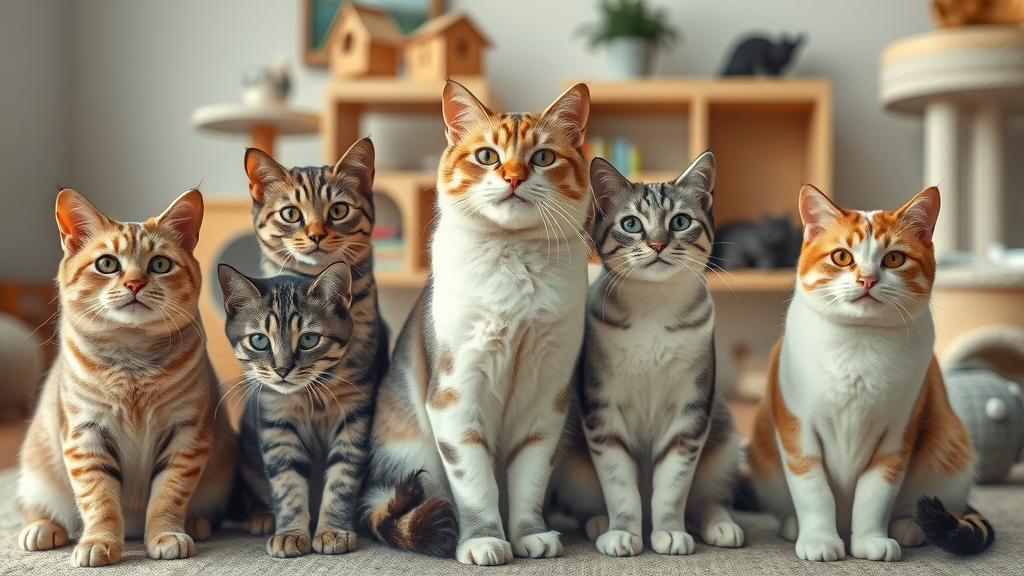
How Often Should Cats See a Vet? Key Takeaways for Feline Owners
- Kittens: Vet visits every 3–4 weeks (6–16 weeks), then yearly checkups. Extra care for litters of kittens or outdoor exposure.
- Healthy adult cats: Annual wellness exams; indoor cats can sometimes go yearly, outdoor cats every 6 months.
- Senior cats (8+): At least twice a year; more often if managing a health condition.
- Special needs, chronic illness, or breed-specific risks: Follow your vet’s custom plan, often every 3–6 months.
- Any sudden health issue: Prompt vet visit, even if not “due” for a checkup.
Frequently Asked Questions on How Often Should Cats See a Vet?
How often should I take my indoor cat to the vet?
Healthy adult indoor cats should see the vet at least once a year for a comprehensive wellness exam. If your cat has chronic health issues, your vet might recommend more frequent visits. Annual exams help catch early signs of disease, dental problems, and nutritional needs unique to indoor cats.
How often should a house cat see a vet?
House cats—those who live exclusively indoors—need yearly checkups for preventive care, vaccines, weight management, and dental evaluations. If behavioral or health issues develop, see your vet right away regardless of the regular schedule. Early intervention prevents bigger problems later.
How often should my cat go for a checkup?
Most healthy adult cats require a checkup once a year. Kittens need more frequent visits, while senior cats benefit from twice-yearly exams. Cats with ongoing health issues or high-risk lifestyles may need more frequent vet visits, as recommended by your veterinarian.
Are annual vet visits necessary for cats?
Yes, annual vet visits are necessary for cats at every life stage. Routine exams allow for early detection of underlying health conditions and help your cat lead a longer, healthier life through preventive care and timely intervention.
- Yearly exams: Minimum for all healthy adult cats
- Kittens: Every 3–4 weeks until 16 weeks old
- Senior cats: Twice yearly or more
- Increase frequency with chronic illness or sudden health issue
Recommended Resources for Cat Wellness and Preventive Care
- American Association of Feline Practitioners (catfriendly.com)
- Cornell Feline Health Center (vet.cornell.edu/FHC)
- The American Veterinary Medical Association (avma.org)
- International Cat Care (icatcare.org)
- Your local veterinary clinic's educational handouts
Stay Proactive with Your Cat to the Vet Routine
- Don’t wait until a health issue arises—prioritize preventive care for your feline friend today. We can’t teach your dog to sit — but we can deliver great pet advice every month. 🐕 Subscribe to the newsletter and fetch some fun!
Actionable Step: Aim for annual or semi-annual wellness exams to catch early signs of disease and keep your cat thriving—schedule your next vet visit today!
Regular veterinary care is essential for maintaining your cat’s health throughout their life stages. Kittens should visit the vet every 3–4 weeks until they are about four months old to receive necessary vaccinations and health checks. ( mvavets.com ) Adult cats (1–7 years) should have annual wellness exams to monitor their health and administer any required vaccinations. ( petmd.com ) Senior cats (7+ years) benefit from bi-annual check-ups due to increased susceptibility to health issues like arthritis or kidney disease. ( mvavets.com )
Even if your cat appears healthy, regular vet visits are crucial for early detection of potential health problems. Cats often hide signs of illness, so routine examinations can uncover issues before they become serious. ( petmd.com ) Additionally, indoor cats should also have annual check-ups, as they can still develop health conditions that require attention. ( kingsdale.com )
By adhering to these guidelines, you can help ensure your feline friend enjoys a long, healthy life.
 Add Row
Add Row  Add
Add 


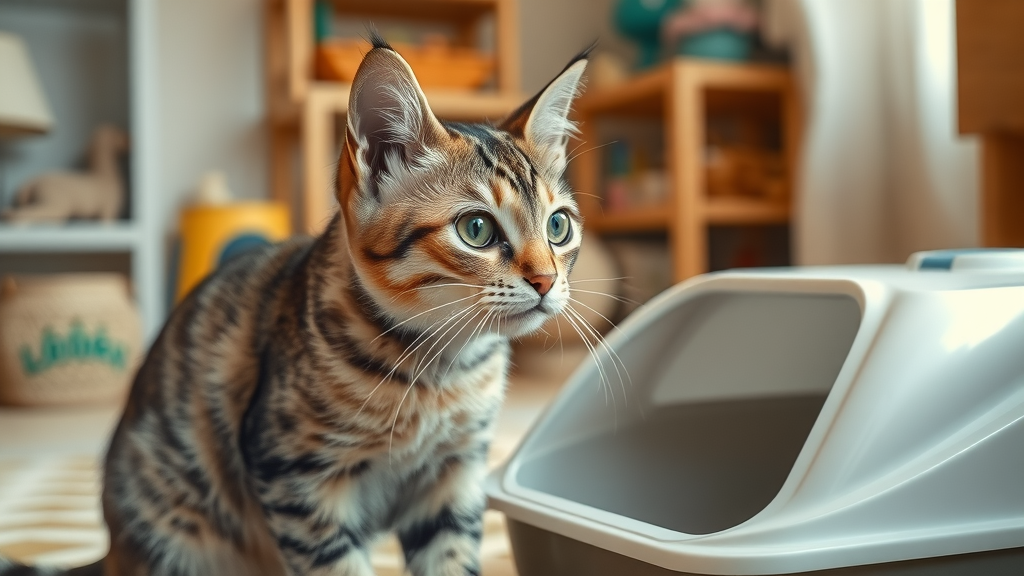

Write A Comment